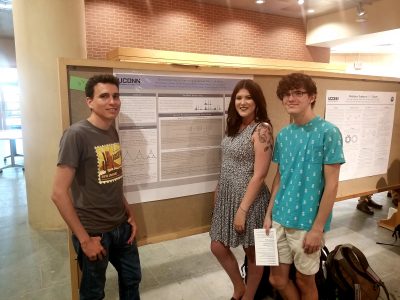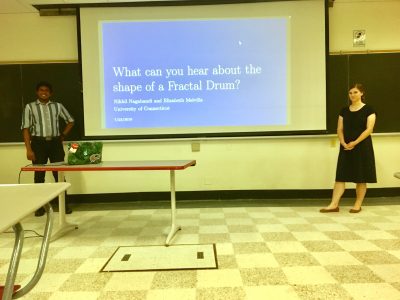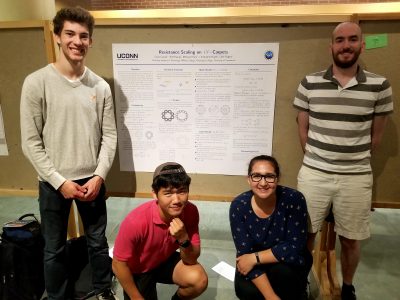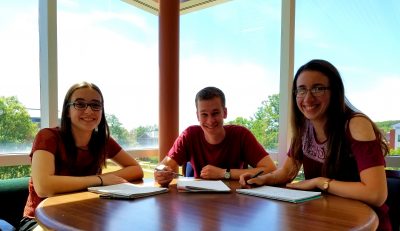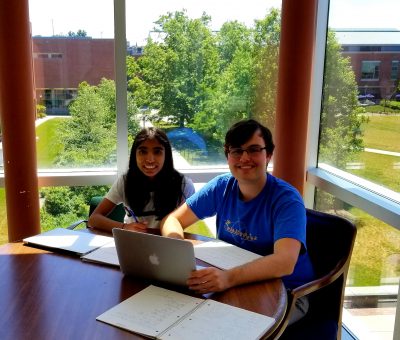Seminars convene every Thursday during the REU program at 12:30 pm in MONT 214.
August 1st at 10:30 am: Keith Conrad, The Biggest Known Prime Number.
Abstract: Since there are infinitely many prime numbers, there is no biggest prime. But there is always a biggest known prime, currently over 24 million digits. It belongs to a family of primes called Mersenne primes. The talk will discuss the history of Mersenne primes and how their primality is checked.
July 25: Gianmarco Molino, Heat Kernels and Index Theory.
Abstract: TBA.
July 18: Matthew Badge, Curves, and Parameterizations.
Abstract: I will introduce some ideas in metric geometry. A curve is the image of a continuous map from [0,1] into a metric space. How do we measure the length of a curve? How do we tell whether or not a set of points is a curve of finite length, and if it is, how do we build a map whose image is the curve? If time permits, I will also describe analogues of these questions for higher-dimensional curves, which are open for research.
July 11: Behrang Forghani, Harmonic Functions, and Trees.
Abstract: In this talk, I will introduce the notion of bounded harmonic functions and discuss some of their properties for Markov chains.
D. Blackwell classified the space of bounded harmonic functions for random walks on Z. I will present his elegant proof and other results related to regular trees.
July 4: No Seminar.
June 27: Arthur Parzygnat, Computing the square root of a positive matrix.
Abstract: Given any function f on some domain and a diagonalizable nxn matrix A whose eigenvalues are in the domain of f, we will prove there exists a polynomial p such that p(A)=Pf(D)P^{-1}, where P is a matrix of eigenvectors of A and D is the corresponding matrix of eigenvalues. This may sound strange when you look at examples. For instance, given a (positive) matrix A, we will find a polynomial p such that p(A)=sqrt(A), the square-root of A. Along the way of proving this theorem, we will learn several useful techniques and results. For example, we will prove that if B is a matrix that commutes with A, i.e. AB=BA, then f(A)B=Bf(A) for any function f (satisfying the above assumptions).
June 20: Reed Solomon, Graduate School Panel.
Abstract: Want to learn about graduate school in mathematics and the application process. Ask Professor Reed Solomon (Director of Graduate Studies) and Ph.D. students Waseet Kazmi, Gianmarco Molino, Sean Eustace, and Lisa Naples!
June 13: Christopher Hayes, Introduction to self-similar structures.
Abstract: One category of a fractal is the self-similar set. Famous examples include the Sierpinski Carpet and Koch Curve and analysis of these types of fractals is currently an active field of research. In this talk we will go over a variety of examples, discuss some construction methods, definitions, commonly used properties such as the open set condition and having a finite post-critical set, and end with comments on how analysis can be done on these sets, in particular, the construction of a Dirichlet form on a post-critically finite set.
